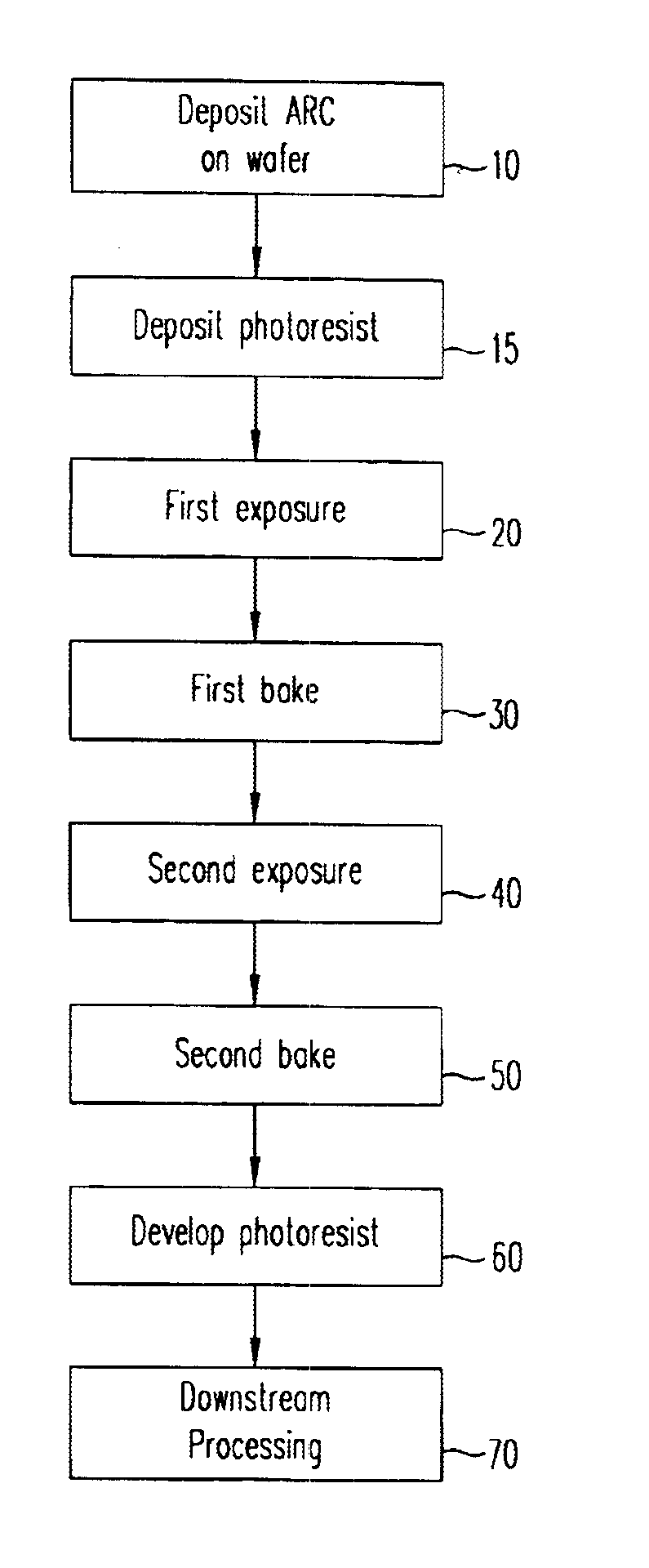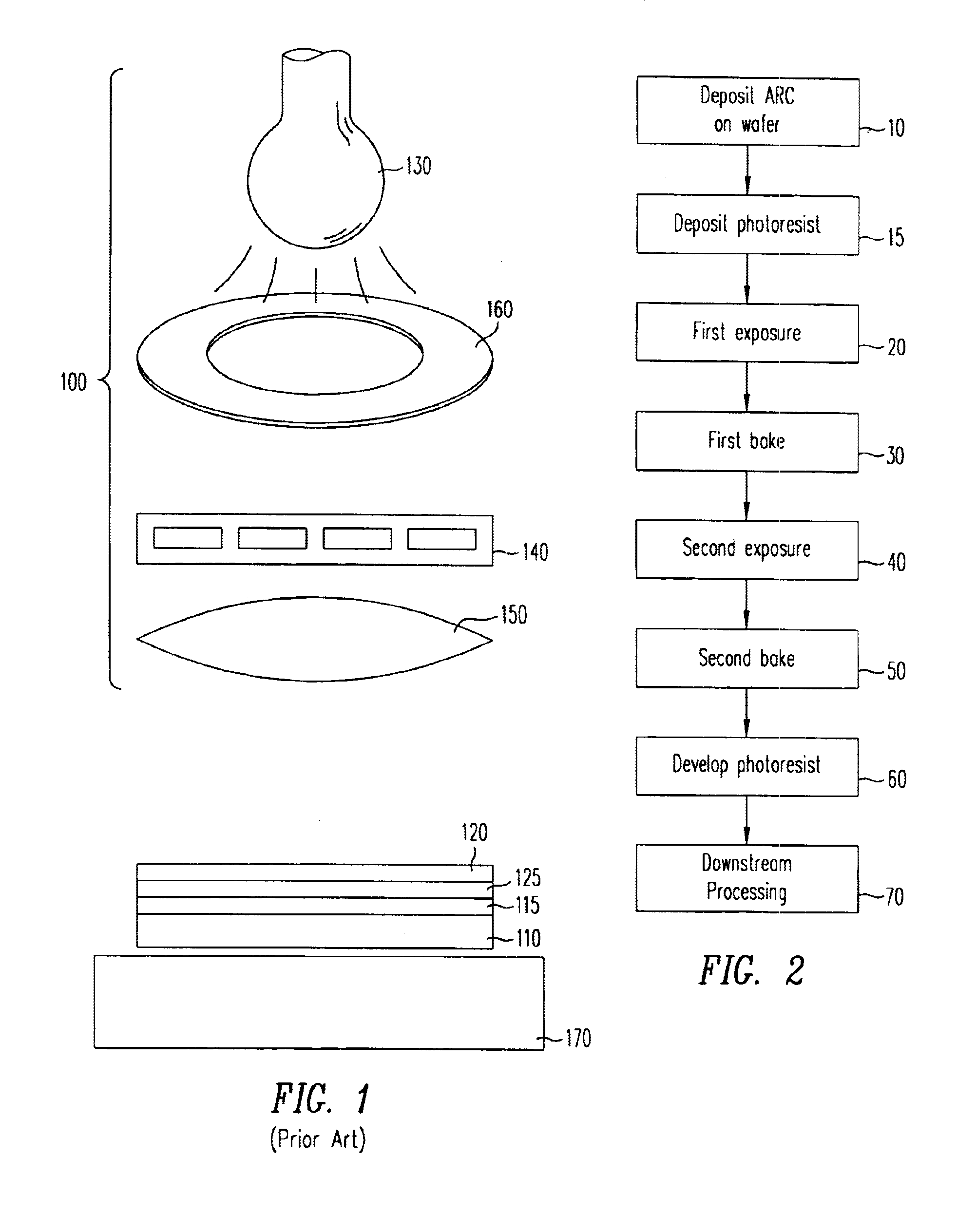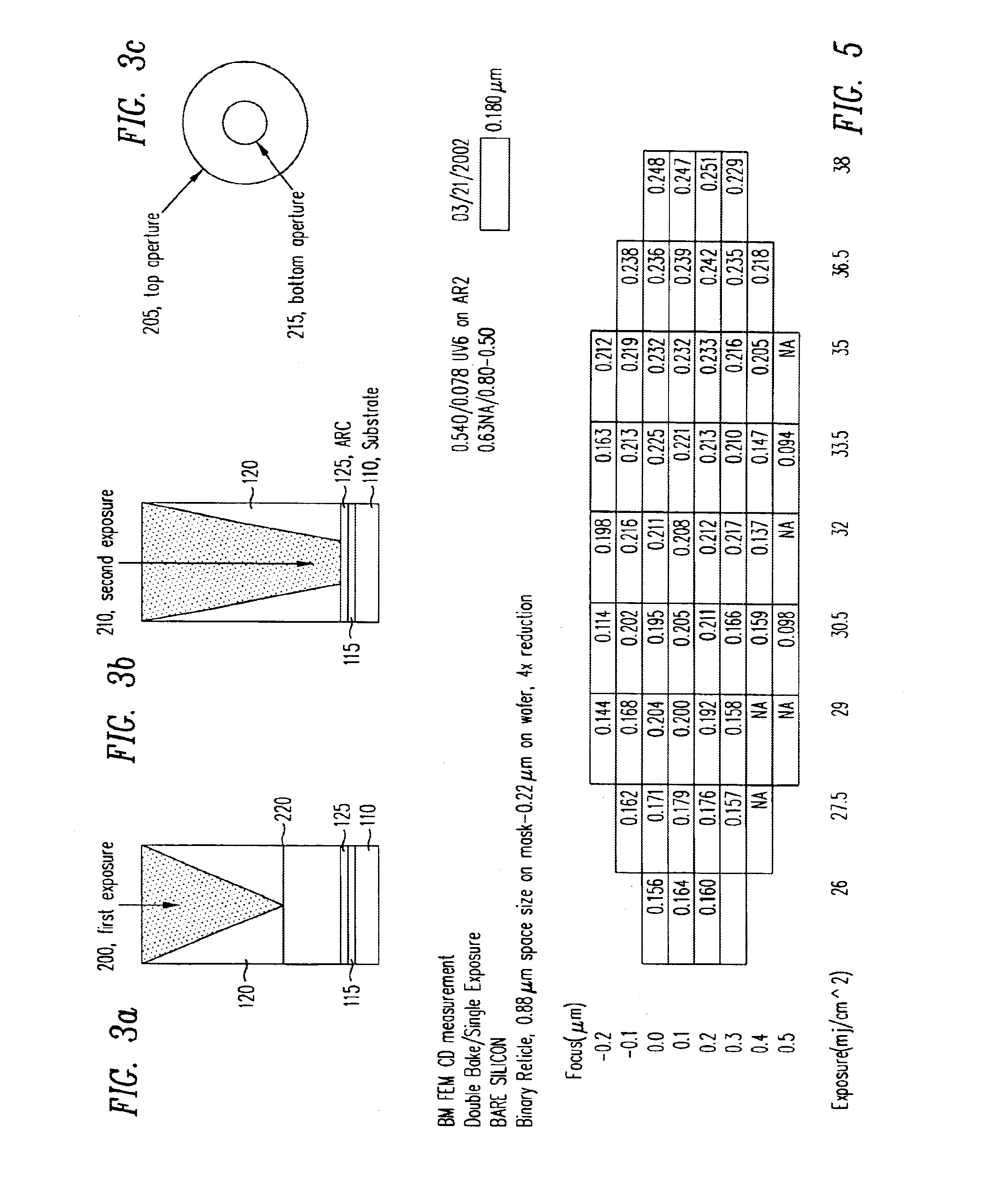Photolithography method including a double exposure/double bake
a photolithography and double exposure technology, applied in the field of photolithography process, can solve the problems of limited feature width of patterned area, half-tone masks, and about twice as expensive as binary masks, and achieve the effect of wide process window and small variability
- Summary
- Abstract
- Description
- Claims
- Application Information
AI Technical Summary
Benefits of technology
Problems solved by technology
Method used
Image
Examples
experiment 1
[0039]A first wafer, test wafer #1, was processed according to the flow chart shown in FIG. 2. The wafer is formed of silicon and provided with a layer of polysilicon to a depth of about 80 nm. A layer of an anti-reflection coating and deep UV photoresist are then provided, as set forth in the above discussion. Because polysilicon has a relatively rough surface topography, the edge definition of features created on the polysilicon surface can be expected to be somewhat less well defined than features created on a smooth surface of, for example, bare silicon. A second test wafer, test wafer #2 is a bare silicon wafer having the same anti-reflection coating and deep UV resist layer. However, the second wafer is exposed with a single exposure and processed using a single bake following the exposure to provide a comparison with the double exposure / double bake method applied to test wafer #1. The test array pattern on test wafer #2 was created using an exposure energy of 32 mj / cm2, with ...
experiment 2
[0042]A third wafer, test wafer #3, is a bare silicon wafer with an anti-reflection coating and deep UV resist layers, as discussed above. Test wafer #3 is processed using a single exposure, but with a double bake, to compare the effects of the different exposure processes with the same baking procedure. The results are similar to those found for the single exposure, single baked wafer, test wafer #2, shown in FIG. 4b. The results for this test wafer #3 are given in FIG. 5. As can be seen from the data, a 0.4 μm focus process latitude is shown for the 0.18 μm contacts, but there is little process latitude in exposure energy, and little focus latitude for the other target contact dimensions. Therefore, a photoresist process with a second exposure followed by a second baking step results in a wider process latitude, than photoresist process with a single exposure followed by a double bake step.
experiment 3
[0043]Finally, two more silicon wafers, test wafers #4 and #5, each coated with an 80 nm layer of polysilicon, an anti-reflection coating and a deep UV photoresist layer, were processed according to the method of FIG. 2, and printed with the test array of points as described above in relation to FIG. 4a. The center of the process window for the second exposure was 18.5 mj / cm2, and 0.1 μm focus for these data, and the target contact hole size was 0.18 μm. The exposure was varied by 0.5 mj / cm2 per column and 0.1 μm focus per row. The data are shown in FIG. 6, and are presented to show process repeatability and to confirm the findings shown in FIG. 4a. As can be seen from the data, the process yields repeatable results between the two wafers #4 and #5, to within about 3% at the center of the process windows for the target values, and to within about 10% at the edges of the process windows. The process latitude on depth of focus is about 0.5 μm, and the exposure latitude is again about ...
PUM
 Login to View More
Login to View More Abstract
Description
Claims
Application Information
 Login to View More
Login to View More - R&D
- Intellectual Property
- Life Sciences
- Materials
- Tech Scout
- Unparalleled Data Quality
- Higher Quality Content
- 60% Fewer Hallucinations
Browse by: Latest US Patents, China's latest patents, Technical Efficacy Thesaurus, Application Domain, Technology Topic, Popular Technical Reports.
© 2025 PatSnap. All rights reserved.Legal|Privacy policy|Modern Slavery Act Transparency Statement|Sitemap|About US| Contact US: help@patsnap.com



